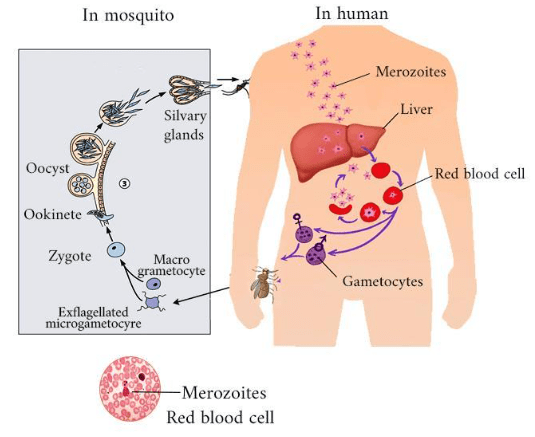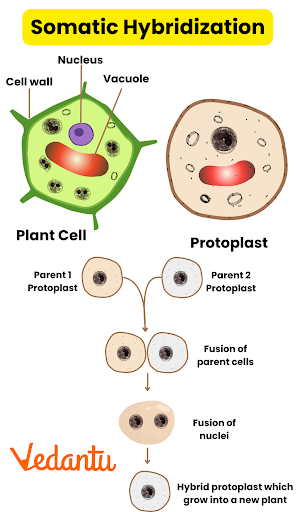Biology Important Questions for Chapter 7 Human Health and Disease Class 12 - FREE PDF Download








FAQs on Human Health and Disease Class 12 Important Questions: CBSE Biology Chapter 7
1. What is the significance of practising important questions for Class 12 Biology Chapter 7 - Human Health and Disease for students?
Important questions for Class 12 Biology Chapter 7 - Human Health and Disease must be practised. because it assists them in:
Recognise the key concepts and themes addressed in the chapter.
Determine the key questions and themes that are likely to appear on the board tests.
Get acquainted with the board exam pattern and marking scheme.
Develop the problem-solving and critical thinking abilities needed to effectively answer the questions.
By practising the questions and improving their performance, they can boost their confidence and lessen exam stress.
Reread the chapter attentively and identify any areas that require additional attention and practice.
2. What are some of the important questions for Class 12 Biology Chapter 7 human health and disease?
Here are some important questions from Human Health and Disease:
Explain the difference between acute and chronic diseases.
What is immunity? Explain the difference between innate and acquired immunity.
Describe the structure and function of antibodies in the immune system.
Explain the different types of vaccines and how they work.
What is the role of hygiene and sanitation in preventing the spread of communicable diseases?
Explain the different modes of transmission of communicable diseases with examples.
What are antibiotics? Explain the mechanism of action of antibiotics on bacteria.
What is the difference between bactericidal and bacteriostatic antibiotics? Give examples.
Describe the symptoms, causes, and prevention of malaria.
What is cancer? Explain the different types of cancer and the risk factors associated with them.
Practising these important questions can help students to prepare effectively for the Class 12 Biology exam and score good marks.
3. Name the important concepts discussed in NCERT Solutions for Class 12 Biology Chapter 7 Human Health and Disease?
The important concepts discussed in NCERT Solutions for Class 12 Biology Chapter 7 - Human Health and Disease are:
Introduction to Health and Diseases
Types of Diseases - Communicable and Non-Communicable
Immunity - Types, Mechanism and Immunisation
Common Diseases in Humans - Malaria, Tuberculosis, AIDS, etc.
Cancer - Types, Causes, and Prevention
Drugs and Alcohol Abuse and their Impact on Health
Adolescence, Pregnancy, and Health
Population Explosion and Health Issues
Public Health Measures to Control Diseases
4. What do you understand by human health and disease according to NCERT Solutions for Chapter 7 of Class 12 Biology?
According to NCERT Solutions for Chapter 7 of Class 12 Biology, human health refers to the state of physical, mental, and social well-being of an individual. Disease, on the other hand, refers to an abnormal condition or disorder that affects the functioning of the body, often causing physical or mental symptoms. The chapter deals with various aspects of human health and diseases, including the causes, symptoms, prevention, and treatment of different types of diseases. It covers topics such as immunity, vaccination, antibiotics, communicable and non-communicable diseases, cancer, and public health measures for disease prevention and control. The chapter emphasises the importance of maintaining good health and taking preventive measures to reduce the risk of developing diseases.
5. Which website provides a well-curated selection of important Class 12 Biology Chapter 7 - Human Health and Diseases?
Vedantu offers a well-curated list of key Class 12 Biology Chapter 7 human health and disease questions. Vedantu topic matter experts answer these queries. The online learning platform is well-known for providing such thoroughly researched study materials to assist students in their exam preparations. You may find critical questions in the chapter at Vedantu to help students with extra questions that may be asked in the exam. Because these questions are designed with the current academic curriculum in mind, they are extremely useful for scoring well on the paper.
6. Do the important questions for Class 12 Biology come with solutions?
Yes, the important questions are accompanied by detailed answers and explanations to help students understand the concepts thoroughly.
7. How should I use these important questions effectively?
Regular practice is key. Focus on understanding the underlying concepts behind each question, and review the solutions to clarify any doubts you may have.
8. Are these Class 12 Biology Chapter 7 questions in line with the latest CBSE syllabus?
Yes, Vedantu ensures that the important questions are updated according to the latest CBSE syllabus and exam pattern.
9. How much time should I dedicate to practising these important questions?
It’s recommended to dedicate at least 1-2 hours daily to practising important questions from Chapter 7 alongside your regular revision.
10. Why choose Vedantu for important questions in this chapter?
Vedantu’s expert-curated questions are comprehensive, exam-focused, and designed to build your confidence, making them a reliable resource for effective preparation.

























